Minimalist office pops up at London brutalist icon the Smithson Tower
ConForm Architects creates minimalist office at London’s Smithson Tower, uniting brutalist architecture, modernism and a comfortable, almost domestic working environment
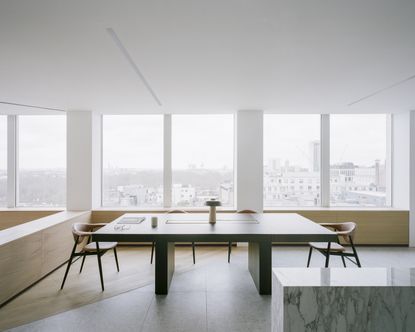
Central London is chock-full of iconic architecture, but few buildings represent brutalist architecture better than the iconic Smithson Tower – previously known as the Economist Building – which was designed in the early 1960s by Alison and Peter Smithson. Now, this piece of Grade II* listed modernist architecture includes a brand new warm and minimalist office interior, courtesy of ConForm Architects.
Sat on the high rise’s 11th floor and occupied by a financial client, the workspace is sleek and contemporary but at the same time, the minimalist architecture feels homely and inviting, creating a comfortable, almost domestic working environment. The open floorplan adds to the steamlined look and directs the gaze towards the long views of the London skyline afforded by the windows. ‘The design responds to the contemporary move towards designing offices that are collaborative rather than cellular,’ explain the architects.
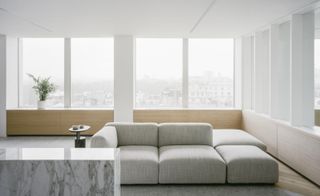
The sharp surfaces and pared-down decor work well with the building’s distinctive octagonal layout (with circulation at the core). The clean overall aesthetic is matched with the building’s existing shell and historical architecture; but the refining of technical elements was equally crucial in the interior redesign, the architects add.
‘A major challenge to the scheme was incorporating and adapting the existing air conditioning and heating and cooling infrastructure. The Economist Building was the first building in the UK to have air conditioning and the historic system was geared around exclusively servicing the cellular perimeter offices. As the original circulation route correlated with that of the air ducting, the opportunity arose to accentuate this service zone by lowering the head height and lining the core with acoustic Kvadrat panels, providing a more intimate and contextual path circumnavigating the core.’
Working with both the needs of an all-mod-cons, contemporary office, and the Smithson Tower’s historical fabric, ConForm Architects used references, such as an early concept sketch design by the Smithsons, to perfect their design. As a result, the new minimalist office balances the tightrope between old and new, brutalism and abstraction, workspace and domesticity.
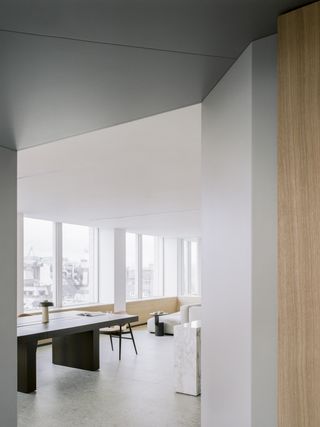
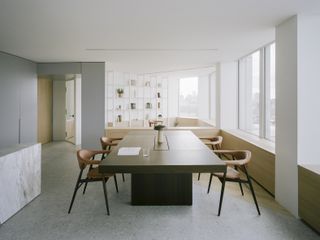
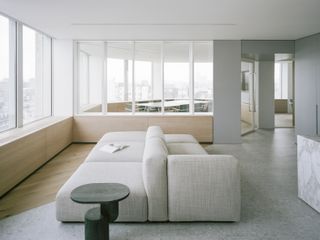
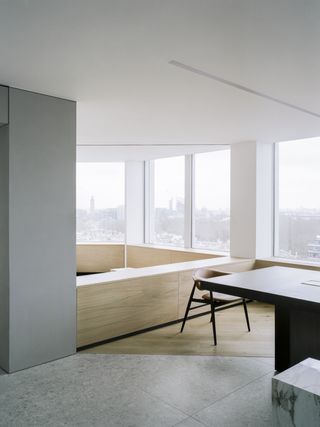
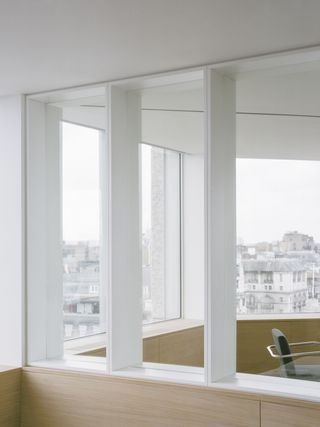
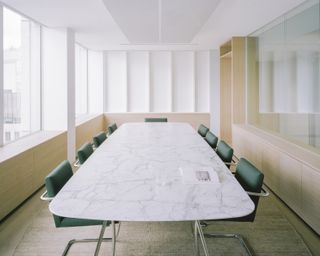
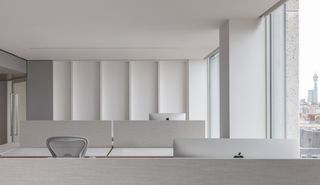
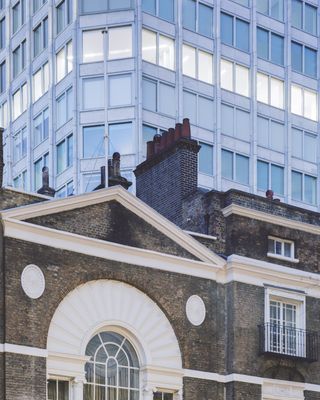
INFORMATION
Wallpaper* Newsletter
Receive our daily digest of inspiration, escapism and design stories from around the world direct to your inbox.
Ellie Stathaki is the Architecture & Environment Director at Wallpaper*. She trained as an architect at the Aristotle University of Thessaloniki in Greece and studied architectural history at the Bartlett in London. Now an established journalist, she has been a member of the Wallpaper* team since 2006, visiting buildings across the globe and interviewing leading architects such as Tadao Ando and Rem Koolhaas. Ellie has also taken part in judging panels, moderated events, curated shows and contributed in books, such as The Contemporary House (Thames & Hudson, 2018), Glenn Sestig Architecture Diary (2020) and House London (2022).
-
 Looking for a long-range luxury EV that’s a true Tesla alternative? Welcome to the Lucid Air
Looking for a long-range luxury EV that’s a true Tesla alternative? Welcome to the Lucid AirWe drive the Lucid Air, the high-performance Californian EV that’s a welcome leftfield choice in a sea of Musk-mobiles. Vote Lucid!
By Guy Bird Published
-
 Umbrian castle hotel Reschio seduces with 1,000 years of history, now explored in a new book
Umbrian castle hotel Reschio seduces with 1,000 years of history, now explored in a new bookThe estate, home to a boutique hotel and rentable houses, is documented in Rizzoli's ‘Reschio: the First Thousand Years’ – and is open for stays
By Tianna Williams Published
-
 Light, nature and modernist architecture: welcome to the reimagined Longwood Gardens
Light, nature and modernist architecture: welcome to the reimagined Longwood GardensLongwood Gardens and its modernist Roberto Burle Marx-designed greenhouse get a makeover by Weiss/Manfredi and Reed Hildebrand in the US
By Ian Volner Published
-
 Meet the 2024 Royal Academy Dorfman Prize winner: Livyj Bereh from Ukraine
Meet the 2024 Royal Academy Dorfman Prize winner: Livyj Bereh from UkraineThe 2024 Royal Academy Dorfman Prize winner has been crowned: congratulations to architecture collective Livyj Bereh from Ukraine, praised for its rebuilding efforts during the ongoing war in the country
By Ellie Stathaki Published
-
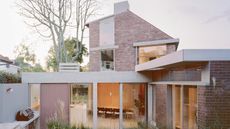 RIBA House of the Year 2024: browse the shortlist and pick your favourite
RIBA House of the Year 2024: browse the shortlist and pick your favouriteThe RIBA House of the Year 2024 shortlist is out, celebrating homes across the UK: it's time to place your bets. Which will win the top gong?
By Ellie Stathaki Published
-
 The new Canada Water boardwalk is an experience designed to ‘unfold slowly’
The new Canada Water boardwalk is an experience designed to ‘unfold slowly’A new Canada Water bridge by Asif Khan acts as a feature boardwalk for the London area's town centre, currently under development, embracing nature and wildlife along the way
By Ellie Stathaki Published
-
 Tour this Bel Vista house by Albert Frey, restored to its former glory in Palm Springs
Tour this Bel Vista house by Albert Frey, restored to its former glory in Palm SpringsAn Albert Frey Bel Vista house has been restored and praised for its revival - just in time for the 2025 Palm Springs Modernism Week Preview
By Hadani Ditmars Published
-
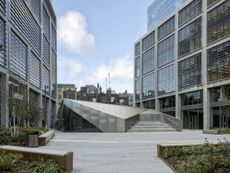 The Museum of Shakespeare set to open in east London
The Museum of Shakespeare set to open in east LondonThe Museum of Shakespeare puts the remains of the ancient Curtain Playhouse at the centre of 'The Stage', a new urban development in the heart of Shoreditch
By Smilian Cibic Published
-
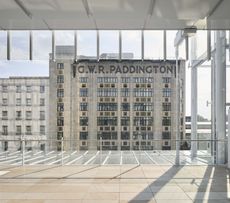 Paddington Square transforms its patch of central London with its 'elevated cube'
Paddington Square transforms its patch of central London with its 'elevated cube'Paddington Square by Renzo Piano Building Workshop has been completed, elevating a busy London site through sustainability, modern workspace and a plaza
By Ellie Stathaki Published
-
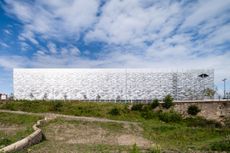 Architectural car parks to drive into, in the UK and beyond
Architectural car parks to drive into, in the UK and beyondArchitectural car parks form an important part of urban infrastructure but can provide a design statement too; here are some of the finest examples to peruse, in the UK and beyond
By Ellie Stathaki Published
-
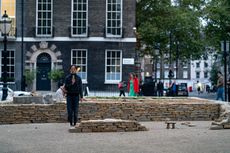 Architectural Association's newest show uncovers the architectural legacies of rural China's lost generation
Architectural Association's newest show uncovers the architectural legacies of rural China's lost generationThe Architectural Association’s ‘Ripple Ripple Rippling’ is not your typical architecture show, taking an anthropological look at the flux between rural and urban, and bringing a part of China to Bedford Square in London
By Teshome Douglas-Campbell Published